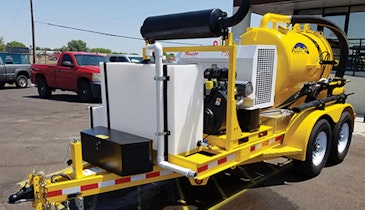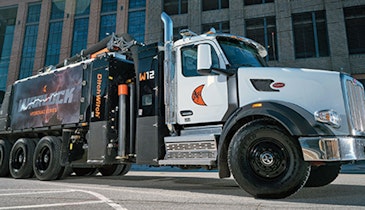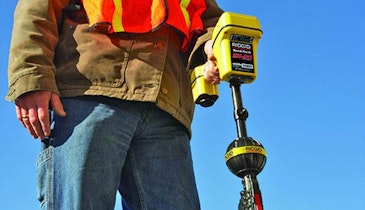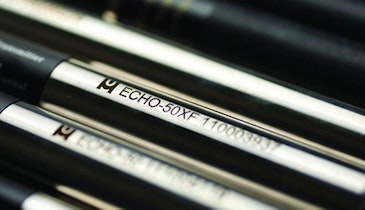Hydroexcavation is the preferred method of digging a hole in sensitive areas because it mitigates hazards, such as utility line strikes, that are costly and often associated with traditional mechanical excavation.
Extremely efficient hydroexcavation equipment has the reputation of a more precise, less-destructive and safer method for daylighting, soil trenching, digging piling holes, removing debris and cold-weather digging.
Here are three key steps to follow when you plan to dig a hole with a hydrovac:
1. Mark the proposed site with white paint.
2. Call 811 well in advance of the date you plan to dig and wait for utilities to mark the proposed site and confirm that all utilities responded to your 811 ticket prior to digging.
3. Dig.
Digging around utilities
Digging a hole with a hydrovac is achieved in four simple steps to dig around existing utilities, gas mains and power lines without risking damage to the infrastructure or injury to workers on the site:
1. Slice the ground surface using the straight-tipped pressurized water wand to forcefully inject water. As per Gas Technology Institute’s “Vacuum Excavation Best Practice & Guideline,” maximum water pressure during excavation in public roads or easements is not to exceed 2,500 psi; below a depth of 18 inches, the water pressure to be used at any time with a straight-tipped nozzle shall be reduced to a maximum of 1,500 psi and monitored using a pressure gauge mounted on the excavation machine.
2. Vacuum up the dry or wet excavated material that is displaced.
3. Change the wand tip to a rotator nozzle for agitating a larger amount of soil without using more water, resulting in a more efficient break up and removal of the soil. As the non-destructive excavation continues, the vacuum removal of the spoils allows visual confirmation of the presence of a utility line, creates a trench, or clears out debris, depending on the job. GTI’s best practice guidelines state maximum water pressure to be used with a rotating nozzle during excavation shall be 3,000 psi and, again, monitored using a pressure gauge mounted on the excavation machine.
4. Successfully avoid damage to utilities or tree roots.
Make use of optional features
Consider optional manufacturer features when determining how you can dig smart for even more productivity, precision and control in the digging process.
Debris bodies come in varying volumes and payloads for mid-size to full-size excavations. A larger debris body is designed to maximize dig time and minimize dump time.
Compact hydroexcavator models for tight urban areas requiring maneuverability may be available in non-CDL configurations, and offer quick setup allowing operators to flip a single switch to begin operations, which greatly reduces setup and teardown time.
Vacuum systems of various types offer flow and pressure ratings to most effectively break up and remove soil types such as wet or rocky soil, compacted dirt and clay, or loosely compacted soil and sand. Based on different geographies and local soil conditions, there may be other useful options and accessories worth the investment.
Additionally, hydroexcavation best practices define pressure limits based on excavation depth. New technology is available to prevent water system pressure from exceeding site or industry requirements and effectively take human error out of the equation for increased safety.
All these features contribute to increased productivity on the job. The result is smarter digging that will be even more profitable for the contractor.
TRUVAC is a premium brand of vacuum excavator trucks designed specifically to meet the critical need for locating and verifying underground utility lines and pipes and safe-digging requirements in the United States and Canada. Focused on quality and safety for underground infrastructure and the men and women who operate vacuum excavation trucks, the TRUVAC product line features the versatile Paradigm subcompact vacuum excavator, the compact and powerful Prodigy with overwhelming productivity, and the HXX series of full-sized machines designed to tackle the biggest digging projects.
800-627-3171 | www.truvac.com | sales@truvac.com





